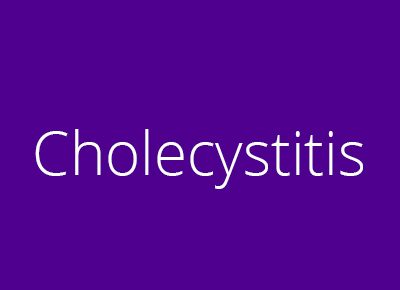What is it?
Cholecystitis is otherwise known as an inflammation of the gallbladder. Typically this occurs when a gallstone blocks the cystic duct, which increases the pressure inside the gallbladder causing it to become inflamed. However, it is possible to have acalculous cholecystitis, which is caused by the gallbladder’s inability to pump out bile. Typically acute cholecystitis occurs in but are not limited to females, around the age of 40, and those who eat a high fat diet.
What are the symptoms?
Symptoms include right upper quadrant abdominal pain, nausea, vomiting, fever, loss of appetite, sweating, yellowing of the skin and eyes (jaundice). It is important to see your medical provider as soon as possible when these symptoms arise.
How is it diagnosed?
This is diagnosed by obtaining an ultrasound of the gallbladder and may be confirmed by a HIDA scan. Physical exam of the right upper quadrant may help diagnose acute cholecystitis. Also, your healthcare provider will order blood work to assess for signs of infection in the body.
How is it treated?
Acute cholecystitis is treated via a cholecystectomy (surgical removal of the gallbladder). Patients are advised to avoid high fat, greasy foods.
Are there any complications?
Without proper treatment of acute cholecystitis, gangrenous cholecystitis may occurs which is a serious infection that can spread throughout the body, a perforated gallbladder may cause a spread of infection in the abdomen (peritonitis), or lead to a build-up of pus (abscess).
